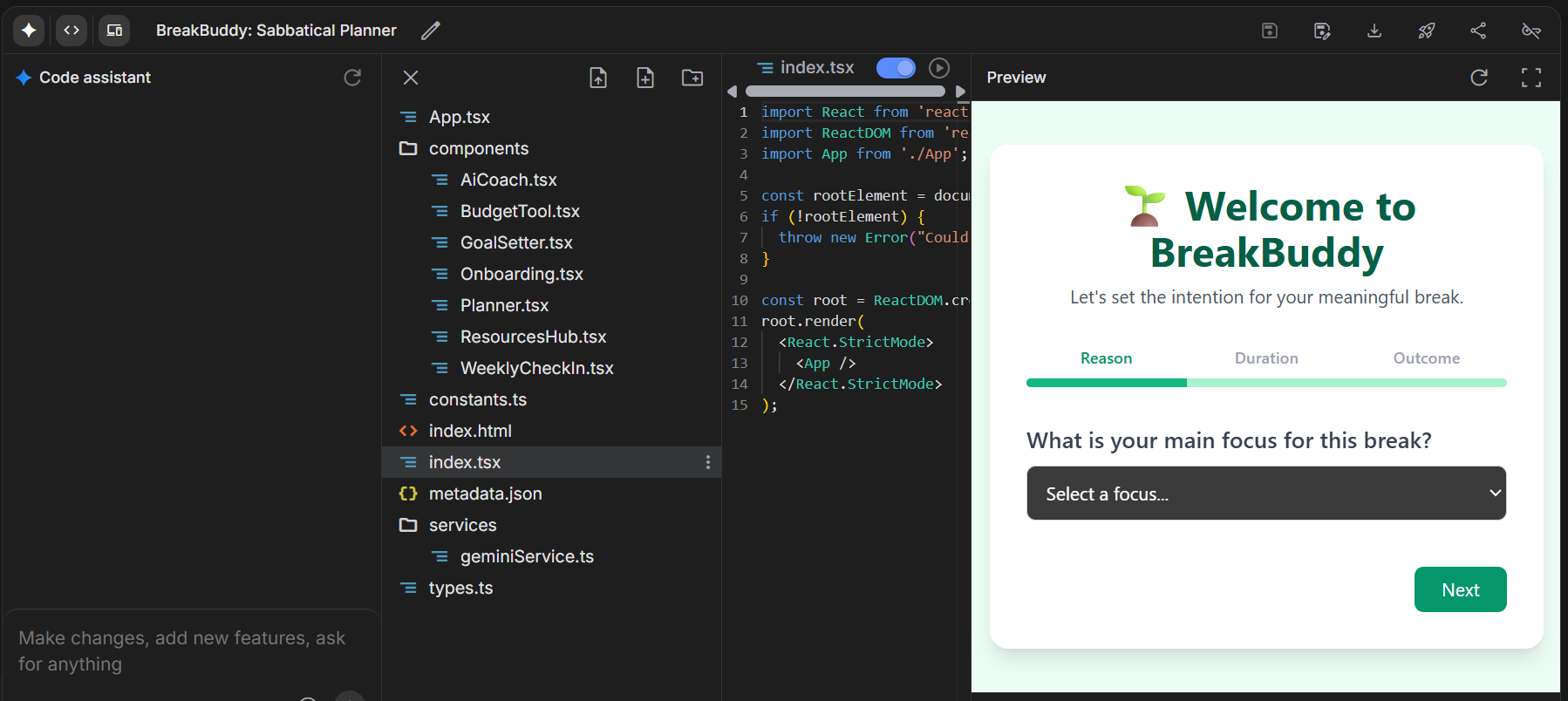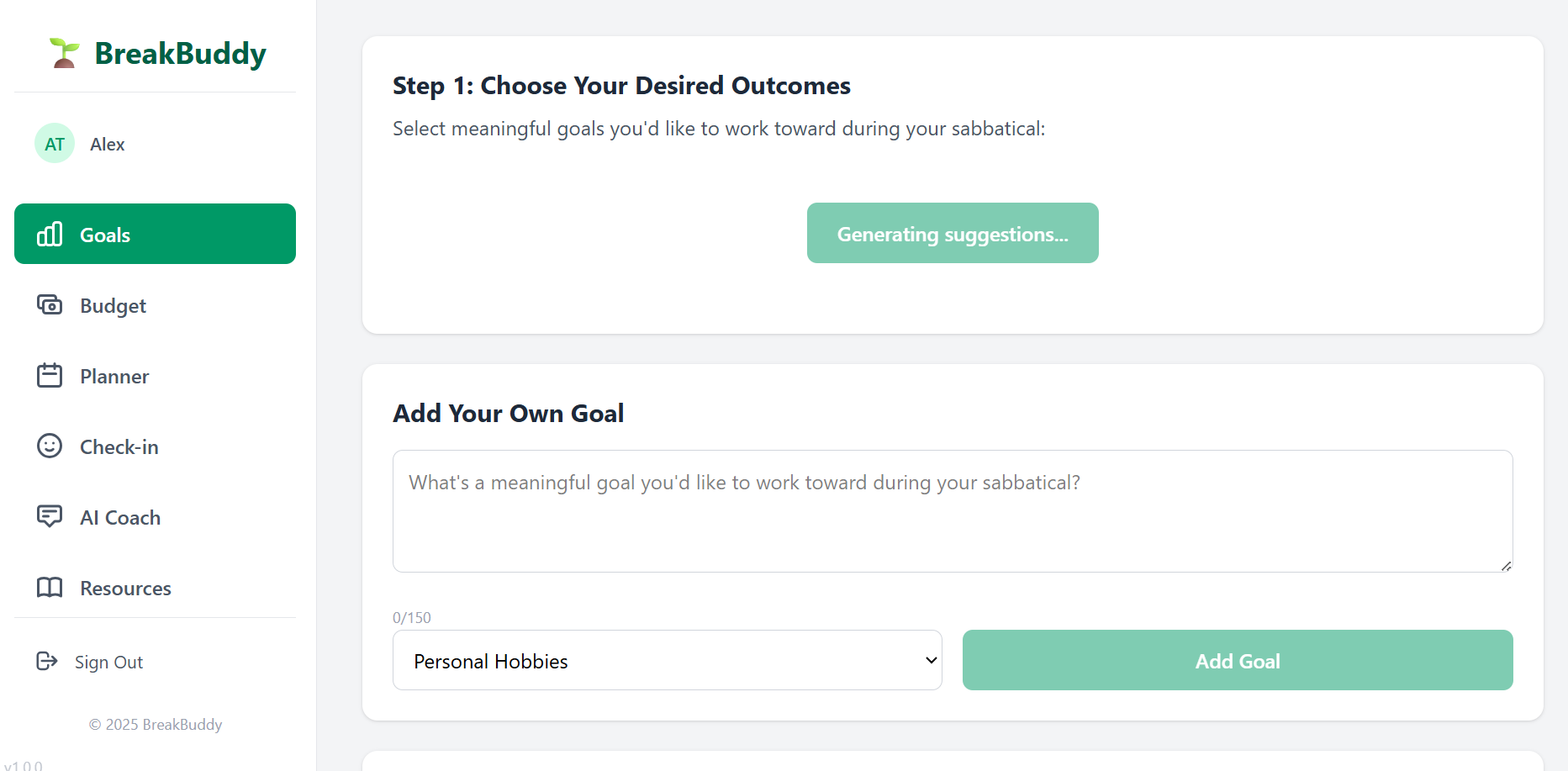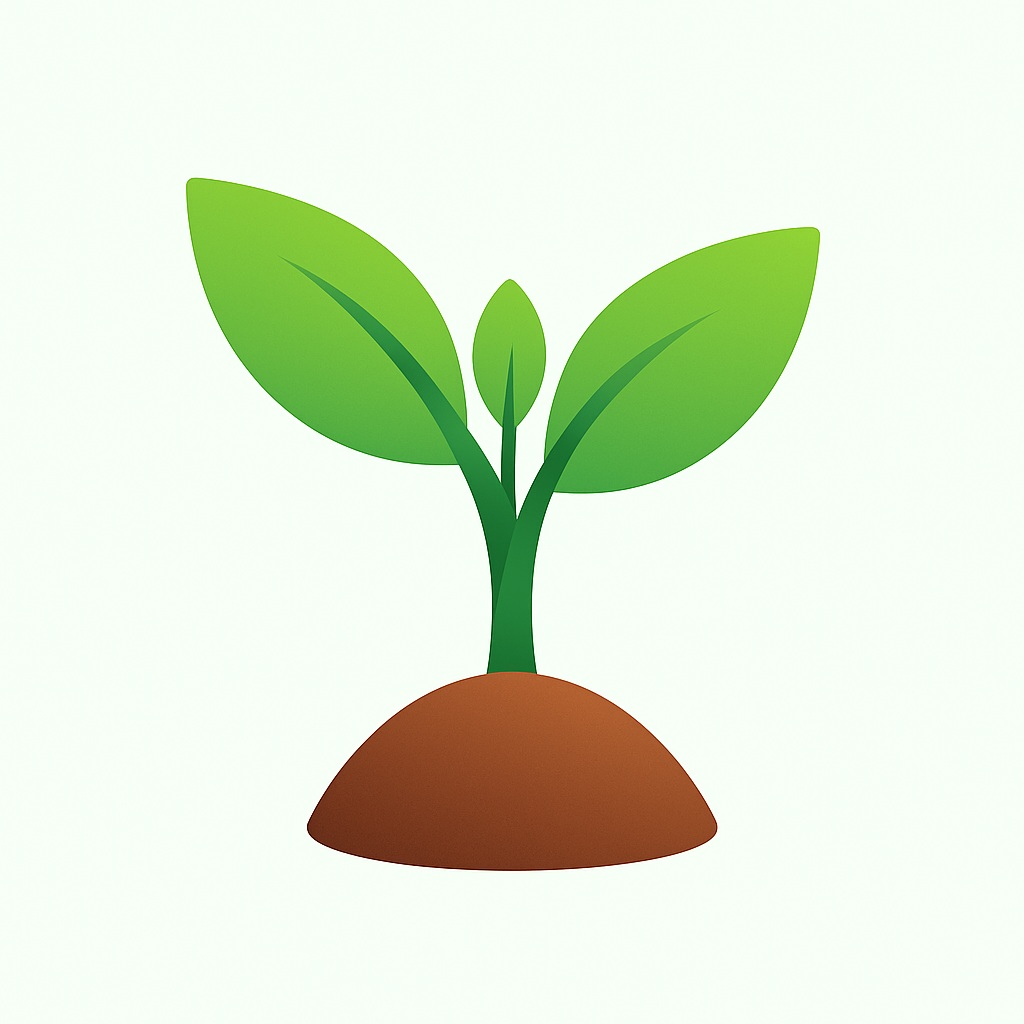It started on a warm Saturday afternoon, as I prepared for a workshop about using no-code tools.
Nothing new - I’d done similar training sessions before. But I figured I’d run through the workflow again, this time with a real problem to solve.
I thought back to the past few months of being on sabbatical. One recurring question kept popping up:
“How are you spending your break?”
People were curious about how I was setting goals, managing time, and staying intentional - without spiraling into endless hours of Netflix or doom-scrolling.
I figured, why not share the core of my current process? It mostly lived on a self-managed spreadsheet in any case.
Starting the Process
So I fired up ChatGPT.
I gave it a rough idea of what I wanted to build, and asked it to help me craft a more detailed prompt.
[Pro-tip: There are various "Prompt to Prompt" CustomGPTs that you can use for this]
I dropped the detailed prompt into Google AI Studio’s App Builder, which generated a pretty decent first cut in under 5 minutes.
After spending 30 more minutes "chatting" with Google AI Studio to tweak the UI, I was fairly satisfied with what I had.
Then I downloaded the code to work on it locally.

(Side note: While I’ve used tools like Lovable, Replit, and v0 - Google is my current go-to for jumpstarting a build.)
With the files in hand, I switched over to Cursor to continue work.
In my head, this was going to take maybe… Monday?
Oh was I wrong.
That’s when the real build began.
The Journey Begins
Over the next 9 to 10 days (in between other projects), I ended up touching nearly every part of the product stack:
🛠 Frontend / Backend
- Refactored the codebase to cleanly separate frontend from backend.
- Built a proper landing page instead of just an onboarding screen.
- Added Clerk for authentication (though Supabase Auth would've worked too).
- Hooked in Google Analytics for tracking, and Promptfoo to evaluate AI responses.
- Wired up Supabase for the database and user records (this took up the bulk of my time, in terms of figuring out RLS policies, etc).

Troubleshooting Supabase-related errors
🧠 Core Logic
- Re-architected every component like the Goal Setter and Planner.
- Added input validation and LLM guardrails to improve reliability.
- Created a persistent user profile system to store progress and preferences.

Earlier version of the Goal Setter module.
🎨 Design
- Asked Cursor to check the design language for consistency (left to its own devices, the AI can give vastly different styles for buttons, saving/editing/deleting entries, etc)
- Tweaked the layout to be fully responsive and mobile-friendly.
- Used ChatGPT to rework the seedling icon (it's meant to be subtly anthropomorphic).

🔐Testing & Security
Before launch, I added:
- Unit tests for the core logic and key user flows (especially around goal creation and journaling).
- Manual testing across devices and screen sizes (I was QA, QA lead, and bug reporter).
- A lightweight security audit - focusing on API exposure, auth scopes, and database policies.
🚀 DevOps
- Bought the domain on GoDaddy and transferred the nameservers to Google Cloud.
- Set up a light-weight CI/CD pipeline and deployed to Google Cloud Run.
- Ran into issues with AI responses and had to roll back.
- Fixed the LLM pipeline, re-deployed, and tested again.
📣 GTM & Feedback
- Soft-launched in Open Beta with a few friendly testers.
- Took in their feedback and made quick improvements.
- Experimented with affiliate links - just to test if it could be self-sustaining.
💡 Post-Launch Iteration
After launch, I continued making updates:
- Added PWA support so users could “install” it like an app on their phone.
- Built a Self-Reflection module for folks not quite ready to set goals.
- Wrote clearer instructions and guideposts throughout the app.
- Clarified data policies and added controls for users to manage their info.
- Set up a user feedback board for ideas, bugs, and future feature requests.
So… What is BreakBuddy?
BreakBuddy is a simple, focused web app for people on a sabbatical - or about to go on one.
It helps you set goals, plan your time, and check in regularly… without pressure.
It’s built on the same frameworks I’ve used myself - just digitized and supported with a dose of AI.
What I’ve Learned Along the Way
- No-code (currently) gets you so far. There’s still a learning curve when turning a prototype into a working, scalable app.
- CI/CD is still clunky for solo builders. I’d like to smoothen my own process.
-
Security needs to be intentional from the start. (Yes, I've accidentally
committed
.envfiles with API keys before. Fixed quickly, but lesson learned..) - A product is always a work in progress. I still haven’t cracked the “wow” moment for BreakBuddy - but I aim to get closer with each iteration.
This was one of the most satisfying “accidental builds” I’ve done.
A workshop demo turned into a real product - something I now use regularly, and something others are starting to use too.
For me, there is joy in solving problems with the tools that you've built.